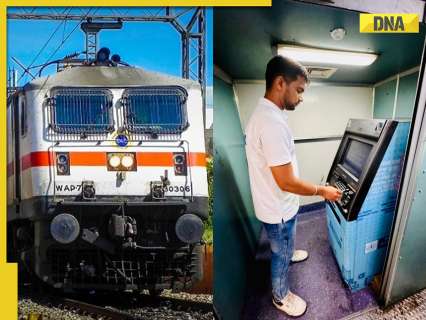Now Reading: India’s First Train with ATM Service: Check Route and Details
-
01
India’s First Train with ATM Service: Check Route and Details
India’s First Train with ATM Service: Check Route and Details

Fast Summary
- The Indian Railways has installed an ATM onboard the Panchavati Express,making it India’s first train to feature such a facility.
- Passengers can withdraw cash, order cheque books, and receive account statements while the train is moving.
- The ATM has been installed by the Bank of maharashtra in collaboration with the Bhusawal division of Central Railways (CR).
- Located in an AC coach, it is accessible to passengers across all 22 coaches connected via vestibules.
- Safety measures include a shutter system and round-the-clock CCTV monitoring.
- The Panchavati Express runs between Mumbai Chhatrapati Shivaji terminus (CSMT) and Manmad Junction (MMR) in Maharashtra.
- Introduced as part of Indian Railways’ Innovative and Non-Fare Revenue Ideas Scheme (INFRIS), early trials showed smooth functionality despite brief network issues near Igatpuri and kasara due to poor connectivity in tunnels.
- Passengers from another train sharing its rake, the Mumbai-Hingoli Jan Shatabdi Express, will also benefit from this facility.
- Divisional Railway Manager Ity Pandey confirmed successful trial results and emphasized that expansion may follow based on popularity among passengers.
Read More: Panchavati Express ATM Installation
Indian Opinion Analysis
The installation of an onboard ATM on the Panchavati Express underscores Indian Railways’ commitment to innovating passenger convenience beyond conventional amenities like seating or dining options. By addressing banking needs during travel through INFRIS initiatives, this step reflects thoughtful use of technology for non-fare revenue generation as well.
Though, challenges such as network limitations highlight operational hurdles that need addressing before expanding similar facilities across more trains or routes prone to connectivity issues over long stretches.
This pilot project benefits not only individual travelers but also showcases how shared resources – like rakes servicing multiple trains – can widen impact efficiently without duplicating costs or installations at scale.
As usage trends emerge over time under sustained monitoring efforts promised by officials like Ity Pandey, this experiment could act as a catalyst for blending modernization with rail journeys nationwide devoid compromise practicality-wise
























